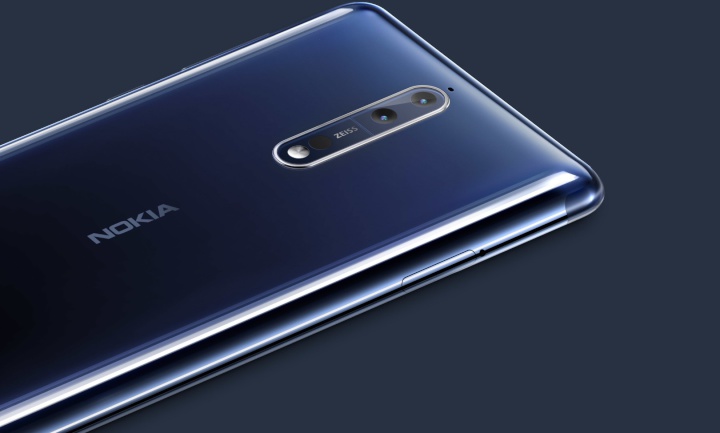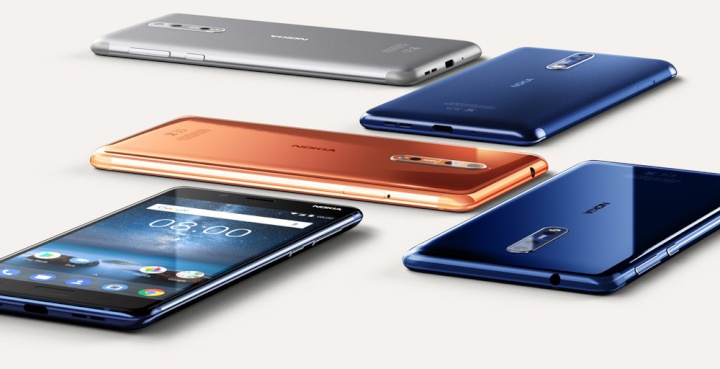
A decade ago Nokia accounted for almost half the mobile phones in use. Within a handful of years it was irrelevant.
Today Nokia is back. Sort of. A little-known Finnish company called HMD Global has the name rights. HMD sells four Nokia models; the Nokia 3, 5, 6 and 8. Not much imagination went into those names.
The 3, 5
and 6 models are low-end Android phones. The Nokia 8 is the
flagship, although at NZ$1000 it is up against other phone
makers' mid-range handsets.
Cameras, bothies
Nokia's marketing makes much of the 8's camera. The phone has one differentiating hardware feature that makes it stand out from the pack.
It can take pictures with the front and rear cameras at the same time. Nokia calls this ability the 'bothie'. Yuck, more awful try-hard-to-be-cute-but-fail jargon.
No doubt the bothies feature will entrance some users. Others will see it as a gimmick.
Camera's were always a big deal with the Nokia
Lumia phones that used Microsoft Windows. Nokia's problem is
that every other phone maker also thinks flagship handset
cameras are a big deal.
Zeiss inside
HMD worked with Carl Zeiss to develop the Nokia 8 cameras. Nokia worked with the same company for the Lumia phones.
There are two 13 megapixel camera sensors on the back of the phone. One shoots colour, the other monochrome. We've seen this before on the Huawei P10. There's a two-colour flash and the aperture is f/2.0.
If you're feeling arty, you can take monochrome shots. There's also a bokeh mode, which is run of the mill on today's phones.
The same 13MP colour sensor is on the front of the phone. Unlike most front facing cameras this one includes auto-focus. If you think this sounds familiar, we've seen it before on the Samsung S8. The Nokia 8 version is a little more polished, but we're talking nuances here, not a great leap forward.
This is what delivers the 'bothie'. Nokia's
marketing says the both allows you to tell the whole story.
That is you can take photos and videos of yourself while
also shooting whatever is on front of you.
Side by side
When using bothie mode, the two images appear side-by-side on the phone's screen. In practice it's isn't easy to use. Using bothies is more work than most people like.
That's not to say you can't use this feature. Most buyers will try it once or twice then park it for later, which could mean never. The camera software doesn't help. There are few settings for more advanced users. That's strange because advanced users are the ones who will want to get to grips with the hardware.
On the plus side, the Nokia 8 has good quality sound recording. The marketing material refers to Nokia Ozo spatial 360 audio. Whatever that is. There are three built-in microphones. In theory you can add external ones, although I never found out how this works.
In practice you can record reasonable video of
yourself with the front camera and microphones. I can see
how that might work for me as a journalist if I wanted to do
an on-the-spot report direct to-camera. It would work for
someone making a video journal.
Nokia difference?
If HMD thinks the 'bothie' and the camera are different enough from what you find on rival premium smartphones, then good luck with that. In practice you can't do much that you couldn't do almost as well, even easier on a Samsung S series phone. Or on an iPhone. No doubt some people will master the Nokia technology and do wondrous things. Nine out of ten buyers won't get close.

HMD has a much sounder and practical point of difference with the Nokia 8 software. This may sound contradictory when I tell you that HMD has, more or less, left Android alone. Most of the time you get a pure Android experience. There are no annoying overlays.
That in itself is a positive. There is an even more important reason for liking HMD's hands-off approach to Android. It means you'll get regular software updates.
This is a nightmare with most Android phones. Usually important software updates are late or never come at all. Apart from anything else, it means phones can become insecure. Not updating bugs and other flaws is dreadful, disrespectful customer service.
For this reason alone, the
Nokia 8 is a good idea for anyone who wants a phone that is
a serious work tool.
Nokia 8 is pure Android
But, as they say in advertisements, there's more. The pure Android experience is better than you might think. If you've spent the last few years with TouchWiz, Emui or another overlay, it is a treat. There is no bloatware.
I was going to say there's no rubbish software. But that's not true. During the review pop-up messages asked me to rate the phone out of so many stars. There's enough of that passive-aggressive nonsense from second-rate apps.
This undermines, but doesn't invalidate, the pure
Android claims. It is enough to put me off the new Nokia.
You may feel otherwise.
Look, feel, hardware
The Nokia 8 looks and feels nice enough. It's faintly retro, we're talking two or three years here, not a throwback to Nokia's glory days. Although if you are nostalgic for that, you can use the famous Nokia ring tone.
HMD hasn't gone for the curved screen used by Samsung. Nor will you find the near zero bezels popular elsewhere. The camera lens does have a bump, but it's not asymmetric like on the iPhones.
Ring tone aside, you won't
turn heads with the Nokia 8. It looks like a generic phone.
The phone feels fine. It is light and thin in the hand. The
review model is in a polished dark blue case. It isn't water
proof. The fingerprint sensor sits below the screen, which
suits most people.
Nokia 8 verdict
HMD position the Nokia 8 as a premium Android phone. Yet it is well behind the best from rivals like Samsung, Huawei and Sony. It's not a patch on this year's or last year's iPhones either.
It looks and feels more like a premium phone than most mid-range models. That is until you start using it. It's a good phone, not a great one.
Which means it is another mid-range phone although prettier than most. Even so, at NZ$1000, it is one of the most expensive mid-range phones around. At NZ$800 it would be a sure-fire winner, without a price cut it is going to stay an also-ran. Nokia's comeback looks unlikely to set the market on fire.
Nokia 8 review: Classy midrange pure Android phone was first posted at billbennett.co.nz.



 Binoy Kampmark: Arresting And Killing Greenies - Targeting Climate Change Protests
Binoy Kampmark: Arresting And Killing Greenies - Targeting Climate Change Protests Ian Powell: Welcome Puberty Blockers Report But Beware Derailing Transphobia
Ian Powell: Welcome Puberty Blockers Report But Beware Derailing Transphobia Gordon Campbell: On Why We Can’t Survive Two More Years Of This
Gordon Campbell: On Why We Can’t Survive Two More Years Of This Binoy Kampmark: Join The Army; Travel To Exotic, Distant Lands; And Radicalise
Binoy Kampmark: Join The Army; Travel To Exotic, Distant Lands; And Radicalise Ramzy Baroud: Letters from Gaza – ‘Alhamdulillah. We Are Not Okay’
Ramzy Baroud: Letters from Gaza – ‘Alhamdulillah. We Are Not Okay’ Ian Powell: Imperialism, Chagos Islanders And The Fight To Return
Ian Powell: Imperialism, Chagos Islanders And The Fight To Return